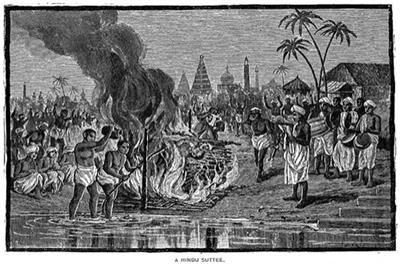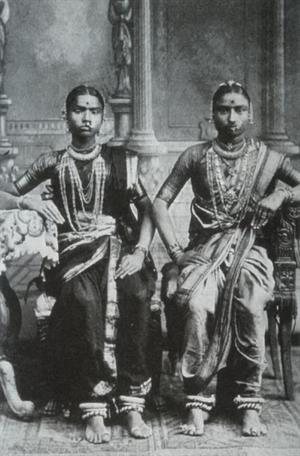PDF chapter test TRY NOW
The Sati
1. The practice of this precarious method of Sati was prevalent from the Gupta period, suggests historical sources. In this, the wife of a dead husband would be thrown into the funeral pyre of her husband even if she’s alive.
2. The inhuman practice was followed religiously by the Patriarchial society of the Rig Vedic times. Earlier, it was voluntary as the wife herself accepted to burn along her husband, but it was later forced upon a woman against her will.

The tradition of Sati
If a woman doesn’t have a child after her marriage, she is forced to jump in the funeral pyre of her husband in later periods. The first incident of Sati was recorded in Nepal in 464 CE.
Sati: The word Sati was derived from the Sanskrit word “Asti”, which means “pure or true”. It was believed to be the parameter for a woman to prove her chastity.
The Sati was highly seen among the Rajput Family women who practised this religiously as a part of their custom and named it “Jauhar”.
Historical accounts of foreign travellers had also mentioned the disgraceful practice was prevalent in Indian lands.
Niccolo Conti: He was an Italian traveller who visited India during the Vijayanagar rule in 1420, had mentioned women being burnt along with their husbands in his account.
Raja Ram Mohan Roy and Sati:
1. Considered as the greatest social reformer of Modern India, Ram Mohan Roy was personally affected by the barbaric practice of Sati as his Sister-in-law was thrown into the fire after the death of his brother “Jagan Mohan Roy” in 1811.
2. Raja Ram Mohan Roy vowed to end this inhuman practise as he began his agitation and started printing pamphlets as the practice was not enjoyed by the Vedic Scriptures and Shastras.
3. When Lord William Bentinck became the Governor-general, he took measures to abolish Sati bypassing the “Regulation XVII in 1829” which abolished Sati in India.
The Disgraceful Devadasi System
1. The term “Devadasi” means “girl dedicated to a deity”. Girls at a young age were dedicated to temples and the Priest, who was later not allowed to lead a normal life.

Devadasis
2. The practice of dedicating women to temples was highly prevalent among the Southern and Western Parts of India. In Tamil, the Devadasi’s were known by the name “Devar Adiyal”.
Pottukattu: The ceremony of dedicating a girl to a temple and marrying the deity is performed in Tamil Nadu and is known as “Pottukattu”.
3. This tradition of marrying a girl to the deity began in the 6th Century after which they were used as caretakers of the temple. Fine arts like Bharatanatyam and music were taught to her, and she was asked to perform in temples.
4. Devadasis were treated with high regard in society, but during the later invasions, they lost their status and were treated with disgrace.
The Crusaders against the Devadasi system in Tamil Nadu:
1. Dr. Muthulakshmi Reddy was a prominent figure who fought against the inhumane practice of the Devadasi system in Tamil Nadu. She was the “First women Doctor of India”.
2. Due to her constant efforts to abolish the Devadasi system, she became a member of the Tamil Nadu legislative council. She was instrumental in tabling the “Devadasi Abolition Bill” in 1930, supported by another reformer E.V. Periyar.
3. Rajaji, Moovalur Ramamirtham and Thiru Vi Kalyanasundaranar were the other reformers who fought against removing of this disgraceful system.
